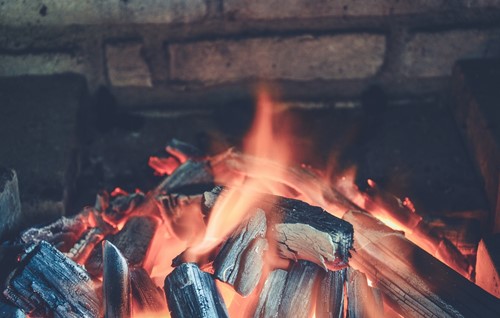
For most homeowners, lower temperatures outside mean a spike in utility bill costs. Gas and electric bills can skyrocket with extra use from HVAC systems and hot water consumption in order to stay comfortable. This can be especially problematic for homes with subpar insulation. Whether you live in a drafty house or you just want to save some money on your heating bills, here are some simple tips to help warm up your home.
If you have a fireplace, it may tempt you to build a cozy fire every night in the winter months. While a fireplace will heat a den or living room, it will also let a lot of that hot air escape through the open flue. Close up the flue when you’re not using your fireplace and you’ll prevent losing valuable energy and warmth.
In homes without central heating, baseboard heaters and vents in the wall and floor are the primary source of heat. Make sure you are not blocking these vents with furniture and other items. This helps prevent potential fire hazards but also lets the warm air circulate into the rest of the room. For baseboards, scoot your furnishings a few inches away from them to allow better flow of warmth.
Even well-insulated windows can make a room chilly in the winter. Consider investing in a set of heavy insulating drapes for the biggest windows in your home in order to trap the warm air inside. Conveniently, you can also use insulated drapes to keep the home cooler in the hotter seasons.
Drafty doorways in older homes can leak a noticeable amount of warm air outside. However, insulating your inside doors will also help keep you warmer. You can make what’s called a “door snake” to lay across the bottom edge of interior doors and keep air from passing underneath. The easiest way to make a door snake is to fill a long tube of fabric with rice, beans or synthetic insulation material and press it against the bottom of the door. No more cold drafts from the basement or garage.
Using the oven will warm up the home while you cook or bake. While you’re making your favorite lasagna or a batch of cookies, you’ll warm up your kitchen and fill the home with delicious scents at the same time. Once you’re finished using the oven and turn it off, you can open the door to let the leftover heat filter out into the kitchen. This strategy is best for homes without pets or young children, as a cooling oven can still pose a serious threat of accidental burns.
No matter the style or age of your home, saving energy is always a good idea. Try these ideas for keeping your home warmer on the coldest of days and save money on your utilities at the same time.
